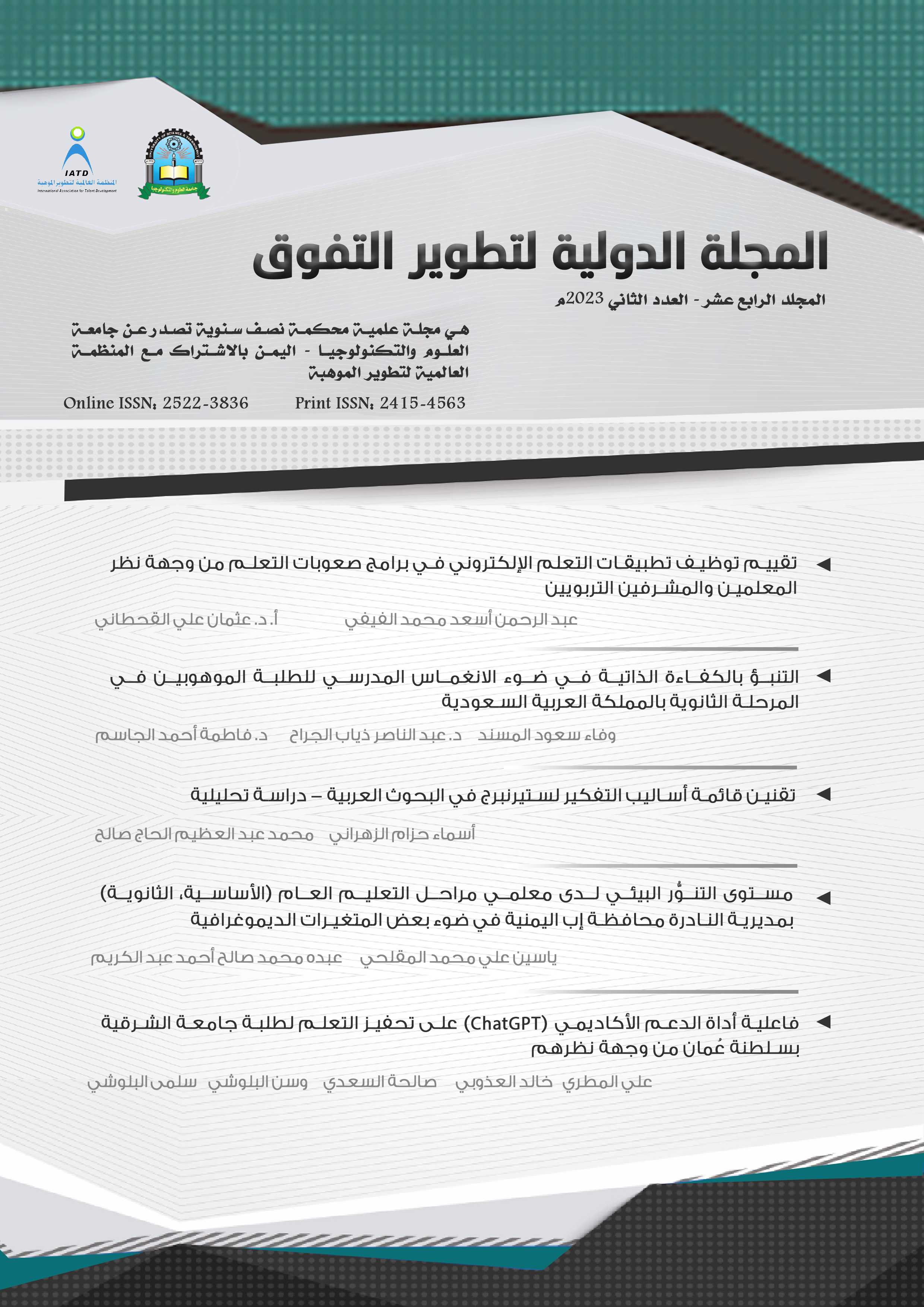Employing e-learning applications in learning difficulties programs from teachers and educational supervisors’ perspective
##plugins.themes.bootstrap3.article.main##
Abstract
The study aimed to investigate the employing e-learning applications in learning difficulties from teachers and supervisors. The study depends on a descriptive approach to describe e-learning applications. A questionnaire was prepared consisting of (37) items in three mains: (1) teachers’ attitudes towards employing e-learning applications in learning difficulties, (2) employing e-learning applications in learning difficulties, and (3) obstacles to employing e-learning applications in learning difficulties). the validity and reliability of the tool were measured. Alpha Cronbach coefficient for the tool is (0.924).
The sample was chosen randomly, consisting of (30) teachers and supervisors in Tabuk city. The results showed that the degree of employing e-learning applications came to a moderate degree with a mean (3.36). The first dimension is a large, with a mean (3.53), while the second is moderate with a mean (2.98), also the third is large, with a mean (3.58). The results showed that there were no statistically significant differences between the averages of the study sample in the responses to the questionnaire and in its dimensions refer to variables (job, years of experience, and training). The study recommended the need to plan professional development for teachers of learning difficulties in the light of their needs.
Downloads
##plugins.themes.bootstrap3.article.details##
learning difficulties programs teachers and educational supervisors with learning disabilities, e-learning applications.

This work is licensed under a Creative Commons Attribution 4.0 International License.
IJTD publishes Open Access articles under the Creative Commons Attribution (CC BY) license. If author (s) submit their article for consideration by IJTD, they agree to have the CC BY license applied to their work, which means that it may be reused in any form provided that the author (s) and the journal are properly cited. Under this license, author(s) also preserve the right of reusing the content of their article provided that they cite the IJTD.








